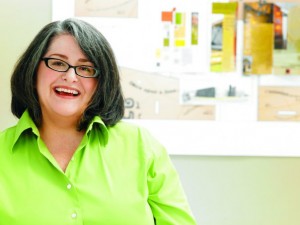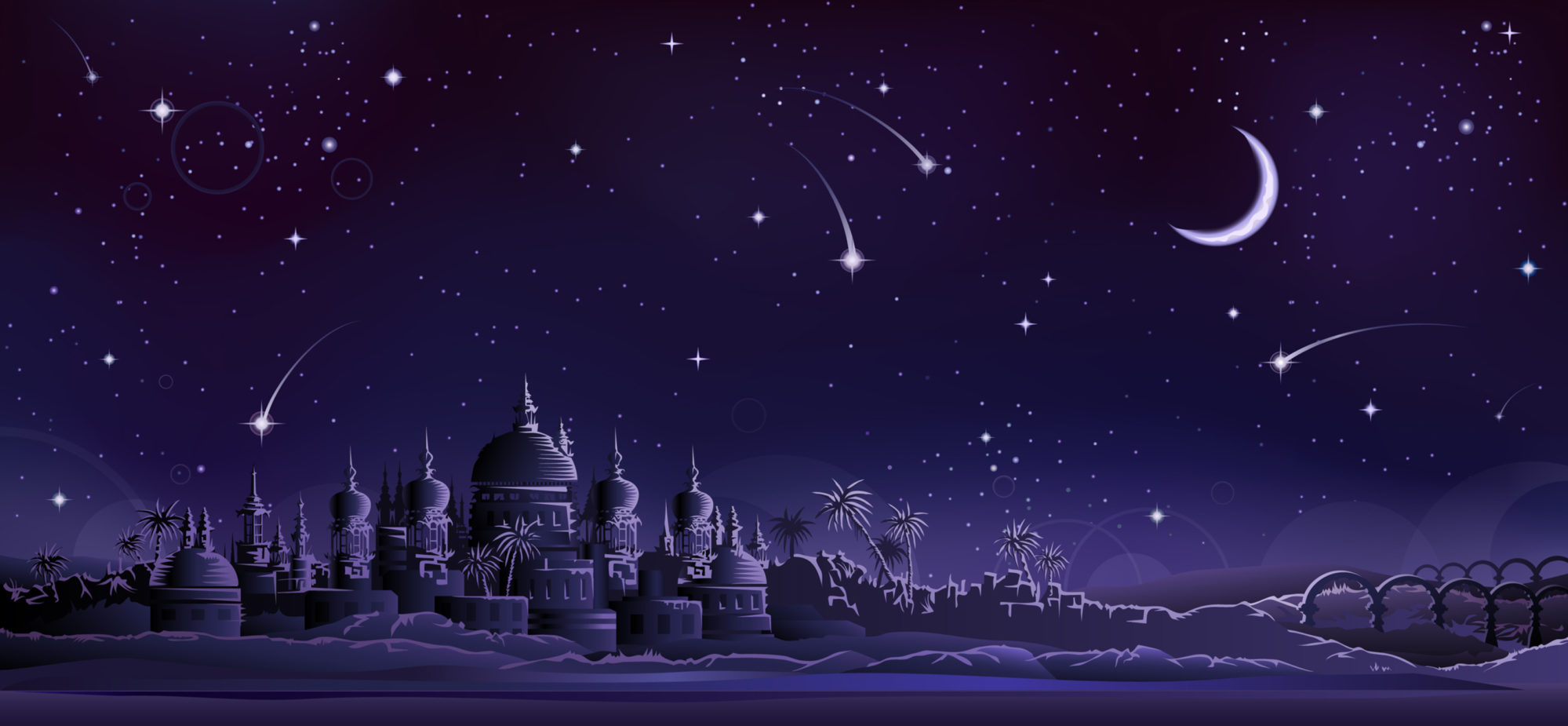I’ve been really excited to unveil this feature article wherein I get together with three heavily seasoned—even salty—librarians. It shall be revealed in two installments over the next two weeks.
As a writer trying to get my work out there in the world, I’ve been told, like any endeavor, a good percentage of success is who you know. I don’t have many connections with publishers, editors or agents, but I do know three really smart people who are librarians. So, to get their points of view on publishing, young adult literature and more, I brought them all together.
Meet the Librarians…

Sarah Dentan started working as a front-line librarian in 1994 and moved to management in 2005. She is currently branch manager for a large public library system in Northern California.

Kevin Moore is a librarian for Portland Community College and the Multnomah County Library. He is also the creator of the kid-friendly comic series WANDERLOST and the political cartoon series IN CONTEMPT.

Britt White has worked as a public librarian for 11 years and specializes in youth services and graphic novels. She currently works at a 37-branch library system in New York State, and teaches library and information science at the State University of New York at Buffalo.
ANDREW PETERS: Hey Guys! Thanks for stopping by andrewjpeterswrites.com. Ignorant folk like me have a pretty limited idea of what librarians do, and we get our ideas from movies like Parker Posey’s PARTY GIRL. So, beyond shushing people, and knockin’ boots with hot Lebanese guys in the stacks, what is it that librarians do?
BRITT WHITE: We do a myriad of things. Over my career, I’ve provided reference services, taught workshops, and created teen-centered programs. Some of the job is branch management and staff supervision. I’ve facilitated school and community group visits to the library and acted as a liaison to the community. I also teach student librarians at the local University.
KEVIN MOORE: As a reference librarian, my main task is to help people resolve their information needs. That’s librarian speak for “answer questions.” We use jargon like “information needs,” because we have discovered through years of trial, error and academic study that the questions people ask us are often only tangentially related to what they need to know.
For instance, someone asks for a book by Mark Twain. After a couple questions it becomes clear that what they really need are travel guides to Europe, and thought “Innocents Abroad” would be a good starting place. This example works the other way around, but you get the idea. And really, it’s not an exaggeration. Even people who are familiar with the Dewey Decimal System or Library of Congress Classification still walk into the library, feeling overwhelmed or alienated by its institutional nature and the “weird” ways librarians organize things.
I view my job as helping people find the information they are looking for through asking questions and listening carefully; and then showing them how to get what they need by using the library’s search tools. That gives them more power over the search, they feel more ownership and usually get pretty excited by becoming more “information literate” in ways that are not as daunting as they first assumed.
SARAH DENTAN: My Branch Service responsibilities are primarily personnel supervision and customer services. I’m much more passionate about my Youth Services job. I’m responsible for the direction of service to folks birth to 18, and then making it happen in 28 locations. That means everything from writing and administrating grants to developing partnerships with cultural institutions to determining best practices for toddler storytimes and then making it possible for staff to implement them. I’m never bored.
AP: It seems like public libraries are in chronic budget crisis. What’s happening these days?
KM: Where to begin….For starters, public libraries receive their funding mostly from local, county, state and federal governments. All of those funding sources are facing huge deficits in tax revenue. Libraries, along with schools and other social services, see the first and most drastic cuts; and then several more cuts after that.
BW: I have yet to understand why governments consistently look to education and libraries as areas where there is so much opportunity to cut “fat.” In the case of libraries, I think it’s partially due to the fact that the public doesn’t have a clear idea of what libraries provide. This is a failure in marketing, and an area where I think library schools and associations could be doing a better job communicating all the amazing things libraries do for their communities.
SD: Our money is a combination of general fund, determined by the city, and property and parcel taxes, which is not subject to municipal whims. That combination has helped us to weather the worst of the downturn. Of course, we’re stretched pretty thin, but for the moment we’re hanging on. Unlike most libraries in California, we haven’t had to lay anyone off, and have made a series of hires.
AP: What do you see as the impact for readers, and the broader community?
SD: Well, it’s bad. For readers, it means longer waits to get the books you want, if you can get them at all, but I think hardcore library users will deal with that. From my perspective, the bigger impact has to do with resources and programming.
In terms of resources, our computers are always in use. In some locations, the wait for a computer is routinely 2 1/2 hours. Unemployment in our area is about 12%, and the majority of our computer users are doing applications, resumes and looking for job leads. If we reduce hours, or can’t replace computers as they die, that bottleneck gets tighter.
BW: Public libraries provide free and equal access to materials. When we begin closing libraries we are often shutting our doors to individuals who don’t have the money, knowledge, or opportunity to access information elsewhere. The “have’s” will continue to be able to access their personal libraries, or go to Barnes & Noble to purchase the materials that they want. The “have not’s” will be left with nothing.
KM: Much of my system’s funding comes from voter-approved bond measures, which consistently pass, no matter the state of the economy, so the impact on them has been slight. What really concerns me is the near-total absence of librarians from our public schools due to education cuts.
Most school librarians in our area are part-time or parent volunteers or teaching staff with additional duties. This has de-professionalization concerns. Many of the part-timers are not actually librarians, but library media specialists—a big difference in education and qualification levels, and also a serious controversy within the profession. But the biggest impact is curricular support. Schools with properly staffed and stocked libraries serve both teacher and student educational needs; they consistently show in study after study to improve student performance, whatever the rubric devised.
AP: Beyond these economic dynamics, or perhaps, related to those dynamics, how are libraries keeping up with the boom in e-publishing?
KM: It depends on how much money one has to address those changes. Unlike the print model, in which a library buys a few copies of a book, lends them out, and replaces the well-worn copies, the e-publishing model requires libraries to subscribe to whole databases of e-books, as well as maintain the servers and broadband Internet connections for patrons to download them either in the library or from home.
Obviously, this model offers wonderful advantages for patrons, and in those lights, I really support them. But they are expensive. Cost is the big barrier of the digital divide separating libraries that serve well-connected urban and suburban communities from their counterparts in rural areas, small towns and poor urban communities.
As e-readers become cheaper, I can see them becoming more widespread among lower income folks, much as cell phones and mp3 players have in the past. Provided your local library maintains decent funding to support the technology required, you may see an increase in e-book lending via downloading stations. One colleague of mine predicts a gradual vanishing of the book stacks altogether, although I suspect he is indulging a utopian/dystopian fantasy.
SD: Right now, we’re using the same transactional model for lending e-products as we are for print books. We purchase licenses from publishers and essentially loan that license to patrons. That’s not all that revolutionary, though I understand how it feels that way to people who don’t separate content from container.
The bigger issues are, I think, situated in how we pay for content and what it means to “own” it. When you buy a book, you own a physical object. E-stuff, from journals to e-books to music, doesn’t work that way, and vendors are using that to their advantage.
AP: Speaking of which, Harper Collins recently put a restriction on how many times their e-book titles can be checked out. Twenty-six, and then the library has to purchase a new product. What do you think about this policy? Will other publishers follow in step? Is there some alternative that would respect public libraries’ commitment to their missions while preserving the ability of publishers to be profitable?
KM: Obviously, there is no built-in obsolescence of an e-book requiring a library to purchase a new copy. If a patron drops an e-reader in his bath tub, that’s his loss. So publishers cannot re-sell us another copy of the same book. However, I think these restrictions overreach, given the continually rising costs of databases.
Libraries can organize cooperative buying strategies, a method that has enabled many poorly funded library systems to afford access to article databases; but there are restrictions there, too, some fair, some not fair. The intellectual freedom versus intellectual property debate is ongoing. I have sympathy for both sides, but it concerns me that our intellectual property laws have become far too stringent in general, having an adverse impact on public access to information.
I think HC and other publishers who follow their model will screw themselves and their authors in the long run. Authors love libraries. They are a reliable purchaser, promote books, promote literacy, invite authors to speak and sign their wares, and will even pay them to do it. I expect they will be joining libraries in fighting this kind of publisher overreach.
AP: I think you’re right, Kevin. I haven’t encountered a single author who is a fan of HC’s move, even if it means a short-term gain in royalties. Many of us are struggling to get our work out to readers—and there’s a direct correlation between library use and book buying—so it screws authors too, especially those who are just starting to build a readership.
SD: Given the backlash from libraries, I think it will be a while before other publishers replicate HC’s model. I also think HC played this the wrong way. Because libraries are still operating within the physical book framework, it feels like we’re buying something and they’re taking it back before we’re done with it.
BW: I think that publishers are scrambling to maintain the profits they are used to seeing with traditional print items. But, if you look at the traditional circulation of a book, this scramble for profits doesn’t make much sense.
With traditional print items, the library purchases one copy of a book that retails at say $29.95. Most distributers provide hefty discounts to libraries of 20-40%, so the library would pay considerably less. Then the book goes into the library’s collection and circulates 200-250 times before it’s taken out of circulation because of poor condition. When you look at this model it doesn’t seem very profitable for the publisher, does it? So why are they creating these artificial constraints with the e-book format?
SD: A more subtle and more palatable model might be something that looks like subscriptions to periodical databases. Rather than “buying” a book you “subscribe” to a publisher’s library of e-books. I can actually see some advantages to this – access to a publisher’s full backlist, rather than just selected titles, no ordering/processing time, etc. Of course, the obvious danger is that publishers will get us hooked and then jack the prices up, like journal vendors have done, but we’ve made our peace with that, apparently.
AP: You all have a background in young adult services so I’m going to focus in on that for a bit. Several of you have told me that your respective library systems have cut and cut young adult services. Is this a case, like when schools cut back on arts programs, of misguided priorities, or going after easy targets—programs that don’t have influence in their particular political context—or a combination of both or something else? What’s at stake?
KM: My system offers teens a mixed bag of services. Its outreach to underserved groups is pretty strong; it has a teen advisory board; it offers weekly after school “teen lounges” for kids to surf the web, get homework help, play Rock Band, etc. However, its general services are weak, in my view. No dedicated teen spaces, and only one dedicated teen librarian.
We have children’s librarians—in our system called youth librarians—that handle everyone from infancy to high school. As such, more resources and energy has gone toward reading programs and services directed at the infant-through-preschool crowd, as well as elementary school students.
I think those programs are great and needed, but studies show that interest in reading spikes in the K – 5 years, and starts to level out after 6th grade. So it’s critical that we don’t abandon teen readers. Kids who are surrounded by books, magazines and other reading materials, see adults modeling good reading habits, and receive encouragement to read, tend to read better than kids who lack these factors.
When libraries — public or school — are closed down or have to cut back on outreach services to young people, young people suffer. It’s not starvation, but it’s low literacy levels, which have long term deleterious effects on higher education and employment opportunities. Factor in at-risk youth, however you define them, these trends only get worse.
AP: I was recently at a social work conference on violence prevention, and—not to dis my own profession—but amidst the many intervention programs directed at kids, the single greatest protective factor is reading. Kids who start reading early, and continue reading, are much less likely to handle conflict violently, commit crimes or join gangs, even if there are environmental factors like poverty and domestic violence pulling them the other way.
BW: Our library system closed their Teen Room on December 23, 2010.
AP: This is sounding like The Grinch Who Stole Christmas.
BW: Good enough comparison. The room had been open for two years and welcomed an average of 1,200 teens per month to relax, play video games, play Yu-Gi-Oh cards, and work on the computers. We brought in a wonderful mentoring group called Stop the Violence and the men in the group provided guidance to those teens who needed special attention.
Maintaining the Teen Room required very little time or staff commitment, so I think it was less an issue of needing to find somewhere to cut and more an issue of attitudes toward teens generally. There is a pervasive negativity aimed at teens and it saturates the minds of many, many people. I feel very strongly that this creates a situation in which teens are seen primarily as a “problem” that needs to be “handled” and so when the “problem” can be eliminated it is a relief to many.
AP: I have to say, it’s both upsetting and validating to hear about this happening in libraries. For social workers, this is a fight we have all the time. Teenagers need safe places to socialize. But when an agency, such as mine, operates a drop-in center for them, there’s frequently the misperception in the community that we’re creating teen vagrancy and crime, because residents and store owners are not comfortable with groups of young people being visible in the neighborhood.
BW: I think it’s such a sad situation for kids, because for many of them, the library is where they feel safe, can be themselves and make lifelong friends. I’ll give you one example.
One day as I was closing up the room I noticed that many of the teens had large pictures pinned to the backs of their jackets. As I looked more closely I realized that each teen had the same picture—a blown-up version of a young man’s school photo—that they had printed out on the room’s computers and then pinned on each other’s backs. I approached one of the room regulars, and asked who that was in the picture. He told me that it was a picture of a friend of theirs from school who had been stabbed to death, and they were attending a candlelight vigil in remembrance of him.
This is not an uncommon occurrence at the branch where I work. When we closed the room we took away a safe place where teens in the community felt welcomed, that they belonged, and that people cared about them.
AP: Does the limiting of teen services have impact on the evaluation and acquiring of young adult literature? I mean, who makes those decisions?
BW: As our youth services have been pared down, it falls to a single youth specialist who is supervised by our children’s services coordinator—a situation that can marginalize the needs of teen readers, for the reasons Kevin described.
For us, I think it’s also an issue of cuts leaving one person to perform the duties of two or three other people. In addition to YA collection development, the youth specialist is the only person to conceptualize and implement programming for teens, in addition to a host of other duties.
After the last round of staff cuts, five years ago, a colleague shared her philosophy with me: “some things get done well, and some things just get done.” After our latest round of cuts we’re at the point where some things get done and some things just don’t.
KM: Our system does a good job on that score, actually. Our youth librarians make recommendations to the centralized collection development librarians, some of whom specialize in youth materials. Input also comes from the outreach programs staff. Sara Ryan, the library system’s teen services specialist—and a YA author herself—also makes recommendations, and receives input from the teen advisory boards.
SD: Our teen selection and budgeting has always been a part of our youth selecting and budget. I will say that when we had a discussion about teen programming recently, our teen librarians felt that, should push come to shove, it was more important to the teens they worked with to have a current and relevant collection than lots of programming.
AP: I’m curious as to what titles kids are most looking for, and what librarians are recommending.
KM: At the reference desk, I tend to see kids seeking specific authors or series (can you say Twilight?); otherwise, I put on the reference interview hat. I try to find out what they like to read, in terms of genres, styles, fiction or non-fiction, and so on.
SD: I’ve been away from the front lines for some time now, so don’t expect anything particularly cutting edge from me. And I can’t recommend a book without knowing what the kid’s into, but in general I’m a proponent of dystopian adventures.
In addition to SHIP BREAKER and THE HUNGER GAMES, I’d recommend Scott Westerfeld’s UGLIES series and Garth Nix’s SHADE’S CHILDREN.
The book I wish all the paranormal romance fans would read is the vampire romance THE SILVER KISS by Annette Curtis Klause, followed eventually by her werewolf book BLOOD AND CHOCOLATE, which is some of the best writing about adolescent female sexuality I’ve seen.
BW: It depends on the kid—their age, what they’ve read and enjoyed in the past, what they tell you about themselves and what their motivation is for coming in to get a book that day. I keep abreast of the trends and read reviews in professional journals so that I may recommend, with authority, both books that I have read and those that I haven’t. I also have a short list of “go-to” authors that have proven to be high quality and popular.
AP: I actually started reading YA well into my 30’s. I don’t know if my experience is typical, at least for Gen X, but when I was a teen, I gravitated toward dark, provocative adult books, because the YA choices seemed too tame. With the exception of Judy Blume’s FOREVER that got furtively passed around in sixth grade. Anyway, though I’ve become a fan, it surprises me how big the YA market is now. What’s changed?
KM: It is a huge market now. The YA specialization goes back to the 70’s with S.E. Hinton, but I don’t think it really took off until the 1990’s, when the generation of teens then was significantly larger than we Baby Busters and thus a potentially lucrative market.
Also, educators and librarians were pushing for materials that reflected the interests and concerns of young people, having recognized the literacy value of maintaining regular reading habits. Then along comes J.K. Rowling and BAM, you can figure out the rest of the story. What we have now is such a diverse range of material — in spite of the Harry Potter and Twilight and Gossip Girl clones, and those serve reader interests, too, so I’m not knocking them. I’m a big Harry fan.
SD: Plus the crossover appeal of YA is pretty well established. Market forces do still drive publishing. Libraries also deserve some credit. We’re are a big chunk of the children’s publishing market, and as YA grew as a separate entity for us, it did for publishers, too. As far as quality of materials, review journals have some to do with that, but awards like the Printz, as well as some key YA editors at major publishing houses, have really raised the bar.
BW: YA has taken off so much, there’s also crossover from the other side, with adult authors like Alex Horowitz, James Patterson, Carl Hiaasen, etc. writing for young adults.
The panel discussion continues next week with thoughts on ‘edgy’ YA, LGBT fiction, and more….
 Share on Facebook
Share on Facebook






